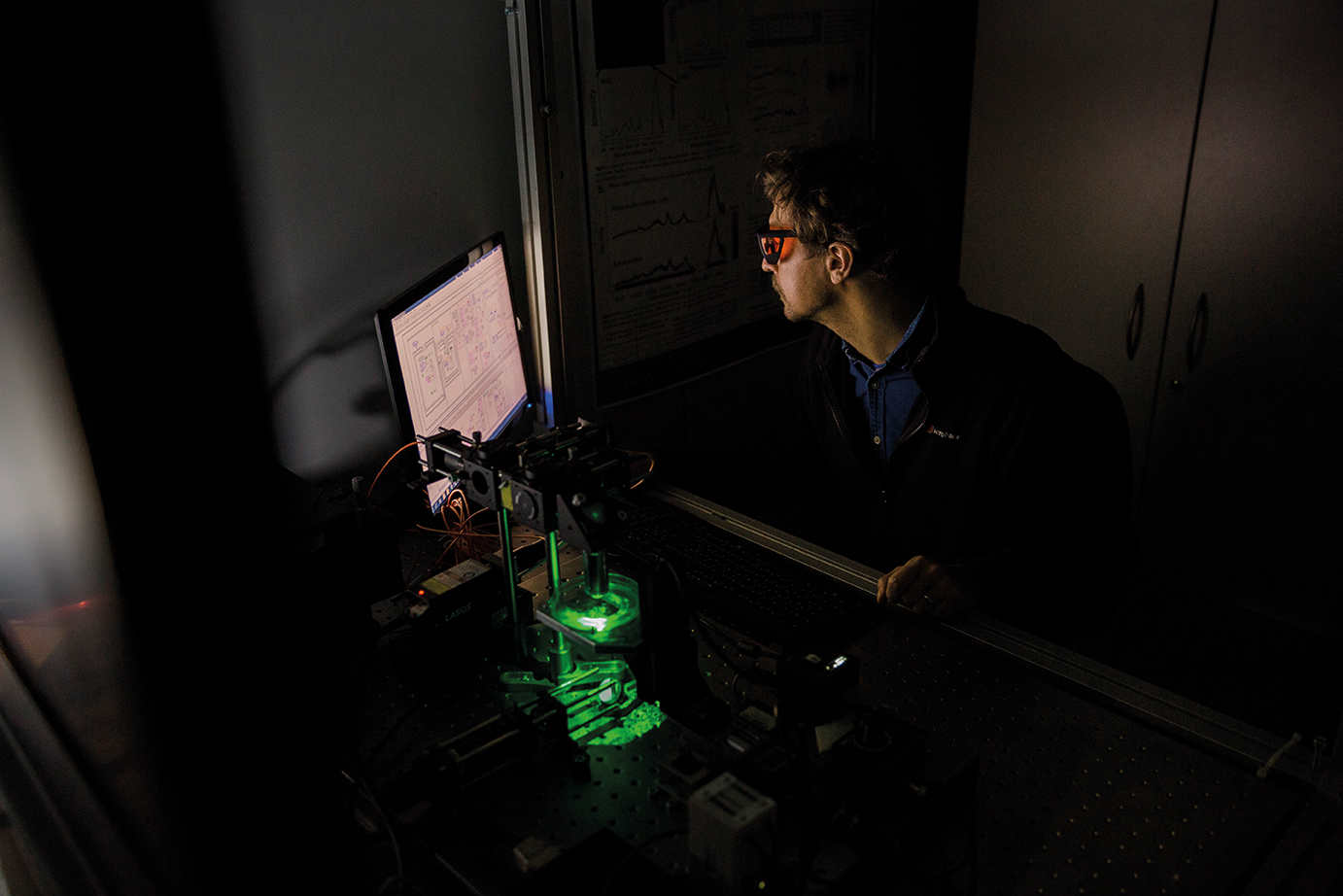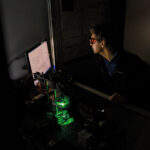- Home
- Research
- Clinical Spectroscopic Diagnostics
- Research results
- Detect Severe Cases Early
Detect Severe Cases Early

12.05.2021
A research team from Leibniz IPHT and Jena University Hospital is focusing on the immune defense. It could reveal whether people are infected with the coronavirus and help predict how they react to the disease
The Corona pandemic is placing a particular strain on the healthcare system. People with severe courses are dependent on intensive medical treatment – but the number of beds and ventilators is limited. A team from Leibniz IPHT and Jena University Hospital (UKJ) is researching a prognostic model to predict severe Covid-19 disease progression early. In the future, it could help medical staff to plan occupancy in advance and transfer particularly at-risk patients to clinics with free capacity in good time.
To do this, the researchers are targeting the body’s immune defenses. “We are profiling white blood cells using Raman spectroscopy. This allows us to see how the patient is doing,” explains Jürgen Popp. His “Spectroscopy / Imaging” research department is developing the approach together with the “Clinical Spectroscopic Diagnostics” team of Ute Neugebauer, the “Photonic Data Science” research department of Thomas Bocklitz, and with Sina Coldewey and Michael Bauer from Jena University Hospital. As director of the Department of Anesthesiology and Intensive Care Medicine and spokesperson of the Center for Sepsis Control and Care (CSCC), Bauer is largely responsible for the sepsis and infection focus of the hospital, in which Leibniz IPHT is also involved, as is Coldewey, an intensive care specialist who heads a junior research group at the ZIK Septomics. Also on the team is Michael Kiehntopf, who heads the Institute for Clinical Chemistry and Laboratory Diagnostics at the UKJ.
For the study on disease progression in Covid-19 patients, the researchers are linking up with a light-based method for rapid sepsis diagnostics that they developed together with international partners (Infection diagnostics as a superheroine adventure, p. 52). In the process, they irradiate the leucocytes in a blood sample with laser light. Using the Raman spectra obtained in this way, they obtain a molecular fingerprint of the cells and can break down their chemical composition. An artificial intelligence-based evaluation then provides information within a very short time and with a high degree of accuracy as to whether sepsis is present and what triggers it: an infection with a virus, a bacterium, or a fungus.
“Our goal is to extract the maximum amount of information from a blood sample,” says photonic data science expert Thomas Bocklitz. “Is there an infection or not? Is it caused by a bacterial or a viral pathogen? If it’s a virus: Is it SARS-CoV-2? And if so, is it expected to be severe or mild?” For this purpose, the researchers are examining leucocytes from blood samples of patients who have been treated with Covid-19 disease at Jena University Hospital. “We compare the host response at different time points of the disease using machine learning methods,” explains Thomas Bocklitz: from the first day of admission to the first week in the hospital to a year later. A method researched at Leibniz IPHT allows the analysis of about 2,000 cells in one hour.
From the evaluation of the immune response, the researchers hope to develop a prognostic model that indicates what course the disease will take in Covid-19 patients during the first three to seven days of infection. The team was already able to show that leucocytes provide valuable information about how a person’s immune system reacts to an infection and what course it will take as part of the HemoSpec sepsis research project. “Now we are pursuing the vision of learning more about the course of disease in corona infections on the basis of these findings, and thus helping patients to receive the right treatment for them,” Ute Neugebauer looks ahead.
The Carl Zeiss Foundation is supporting the research work with funds from its Corona Measures Fund, which it uses to help scientists find solutions to the corona pandemic.


